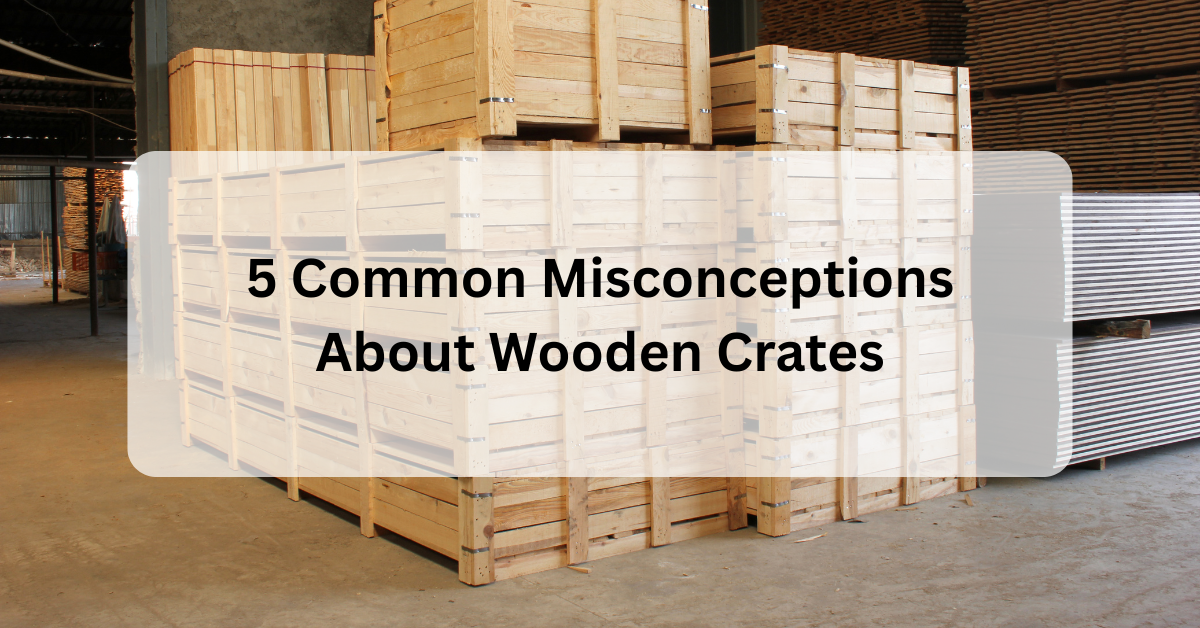Wooden crates have long been the backbone of industrial packaging in Singapore — protecting heavy machinery, delicate instruments, and export goods during transport. Yet, despite their widespread use, many businesses still hold outdated or inaccurate assumptions about what a wooden crate can or cannot do. These misconceptions often lead to poor packaging decisions, unnecessary costs, and even damage to valuable shipments.
Let’s clear the air by debunking five of the most common misconceptions about wooden crates — and highlight why modern, properly treated wooden crates remain one of the most reliable and sustainable packaging solutions today.
1. “Wooden Crates Are Outdated Compared to Plastic or Metal Alternatives.”
Many believe wooden crates are old-fashioned and have been replaced by modern materials like plastic or steel. In reality, wooden crates remain a preferred choice for export packaging due to their balance of strength, flexibility, and environmental sustainability.
Unlike plastic, which is derived from non-renewable sources, wood is a renewable material that can be repaired, reused, or recycled. High-quality heat-treated wooden crates are designed to withstand the demands of international shipping — including humidity and temperature fluctuations — while offering superior shock absorption compared to metal or plastic crates.
Moreover, Singapore exporters favour wooden crates because they meet international phytosanitary standards when properly treated, ensuring smooth customs clearance in countries that enforce ISPM-15 compliance.
2. “All Wooden Crates Are the Same.”
Not all wooden crates are created equal. One of the biggest mistakes businesses make is assuming that any crate will do. In truth, a custom-built wooden crate is engineered to match the specific weight, dimensions, and fragility of the machinery or goods it holds.
For instance, Kaibeng Singapore designs and fabricates custom wooden crates that consider factors such as load distribution, vibration resistance, and humidity control. Some crates are reinforced with internal bracing or cushioning materials, while others feature vapor barriers or desiccants for added protection during sea freight.
In short — a well-engineered wooden crate isn’t just a box; it’s a carefully constructed packaging system built for safety and compliance.
3. “Wooden Crates Are Not Eco-Friendly.”
This misconception couldn’t be further from the truth. Today’s wooden crates are one of the most environmentally sustainable packaging options available.
Wood is biodegradable and has a smaller carbon footprint than plastic or metal. Many manufacturers — including those in Singapore’s industrial packaging sector — now source FSC-certified timber from responsibly managed forests. This ensures that every wooden crate supports long-term forest sustainability.
Furthermore, when a wooden crate reaches the end of its life cycle, it can be repurposed into wood chips, compost, or recycled pallets, minimising waste and promoting circular economy practices.
To learn more about how Singapore supports sustainable wood use in manufacturing and logistics, check out the Sustainable Singapore Blueprint by the National Environment Agency — an excellent resource for businesses committed to greener operations.
4. “Heat Treatment Is Just an Extra Cost.”
Some companies view heat treatment as an unnecessary add-on. However, heat treatment is a crucial process that makes wooden crates and wooden pallets safe for international shipping.
Untreated wood can harbour pests and moisture that cause mold, decay, or contamination. Through heat treatment, the wood’s internal temperature is raised to a level that eliminates insects and larvae without the use of harmful chemicals. This process not only prevents infestations but also ensures compliance with ISPM-15 international standards — required for most export shipments worldwide.
Skipping this step can result in shipment rejections at foreign ports, delays, and financial losses. Investing in properly treated wooden crates from a certified provider like Kaibeng Singapore ensures both safety and peace of mind for exporters.
5. “Wooden Crates Are One-Time Use Only.”
One of the greatest advantages of a well-constructed wooden crate is reusability. Many high-quality crates are designed for multiple shipping cycles, especially those used for machinery relocation or returnable export systems.
By performing simple maintenance such as replacing damaged panels or tightening fasteners, businesses can extend the lifespan of a wooden crate significantly. Reusable crates not only reduce material costs over time but also help companies lower their carbon footprint — aligning with Singapore’s Green Plan 2030 sustainability targets.
For example, a manufacturer exporting equipment across ASEAN can reuse the same set of durable crates multiple times, saving both time and resources.
Conclusion: Smart Packaging Begins with Understanding Your Crate
Misconceptions about wooden crates often lead to wasted resources and packaging inefficiencies. By understanding the true capabilities of modern, heat-treated wooden crates, businesses can make smarter, more sustainable, and compliant packaging decisions.
Whether you’re shipping precision machinery, electronic equipment, or fragile instruments, choosing a trusted packaging specialist like Kaibeng Singapore ensures your goods are protected with expertise built on decades of experience.
From design to treatment and export compliance, Kaibeng delivers wooden crates that stand the test of time — and the demands of Singapore’s global trade network.
